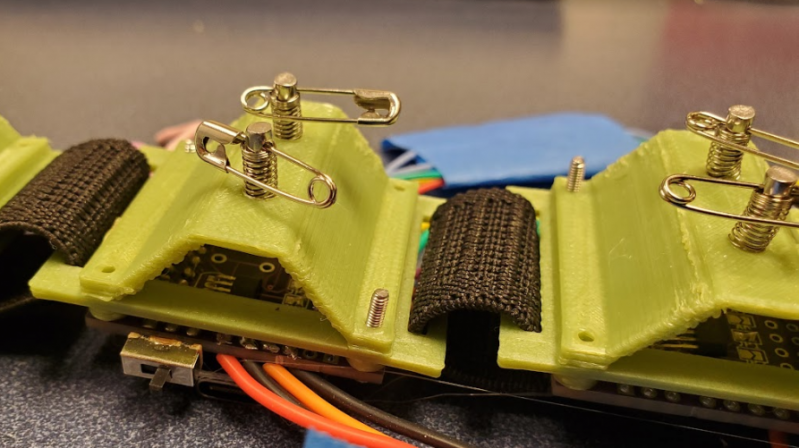Whether you want to build a computer interface device, or control a prosthetic hand, having some idea of a user’s finger movements can be useful. The OpenMuscle finger tracking sensor can offer the data you need, and it’s a device you can readily build in your own workshop.
The device consists of a wrist cuff that mounts twelve pressure sensors, arranged radially about the forearm. The pressure sensors are a custom design, using magnets, hall effect senors, and springs to detect the motion of the muscles in the vicinity of the wrist.
We first looked at this project last year, and since then, it’s advanced in leaps and bounds. The basic data from the pressure sensors now feeds into a trained machine learning model, which then predicts the user’s actual finger movements. The long-term goal is to create a device that can control prosthetic hands based on muscle contractions in the forearm. Ideally, this would be super-intuitive to use, requiring a minimum of practice and training for the end user.
It’s great to see machine learning combined with innovative mechanical design to serve a real need. We can’t wait to see where the OpenMuscle project goes next.


















Use it for a battle bot control input.
It is a mistake to claim that AI was helpful in a coding project, if you don’t have a control to compare against.
I read the article and the linked hackaday.io project, and saw not one single reference of AI helping with writing code. Maybe I missed it, but the only thing I read that could be interpreted as using AI was where the project author discusses using Machine Learning to interpret muscle movements and predict possible desired finger motions. Machine learning ≠ Artificial Intelligence.
All current “AI” is just a form of machine learning and isn’t actually AI and it seems that this just uses machine learning.
I appreciate all the comments and different perspectives shared here. Indeed, the terminologies in the field of AI, Machine Learning, and Neural Networks can sometimes be quite confusing.
To clarify, I used a Random Forest Regressor, a type of machine learning algorithm, in this project. The term AI is often used as an umbrella term that encompasses a wide range of techniques, including machine learning. So while I don’t typically refer to my work as AI, in the broader context, it could be classified as such.
As for the comment about not having a control to compare against, I agree that a control group is essential for rigorous scientific studies. However, my anecdotal experience was that incorporating the Random Forest Regressor significantly improved the prediction accuracy of finger movements. It’s certainly a subjective statement, but it was not made without basis.
Regarding the use of AI for writing code, the contribution of GPT-4 in this project was to provide suggestions and aid in applying the Random Forest Regressor algorithm. So, while it did not directly write code, it played an instrumental role in my coding process.
I hope this clears up any confusion. I’d be glad to delve deeper into any aspect of this if you’d like. And, the suggestion about using it for a battle bot control input sounds intriguing, I’ll surely give it a thought!